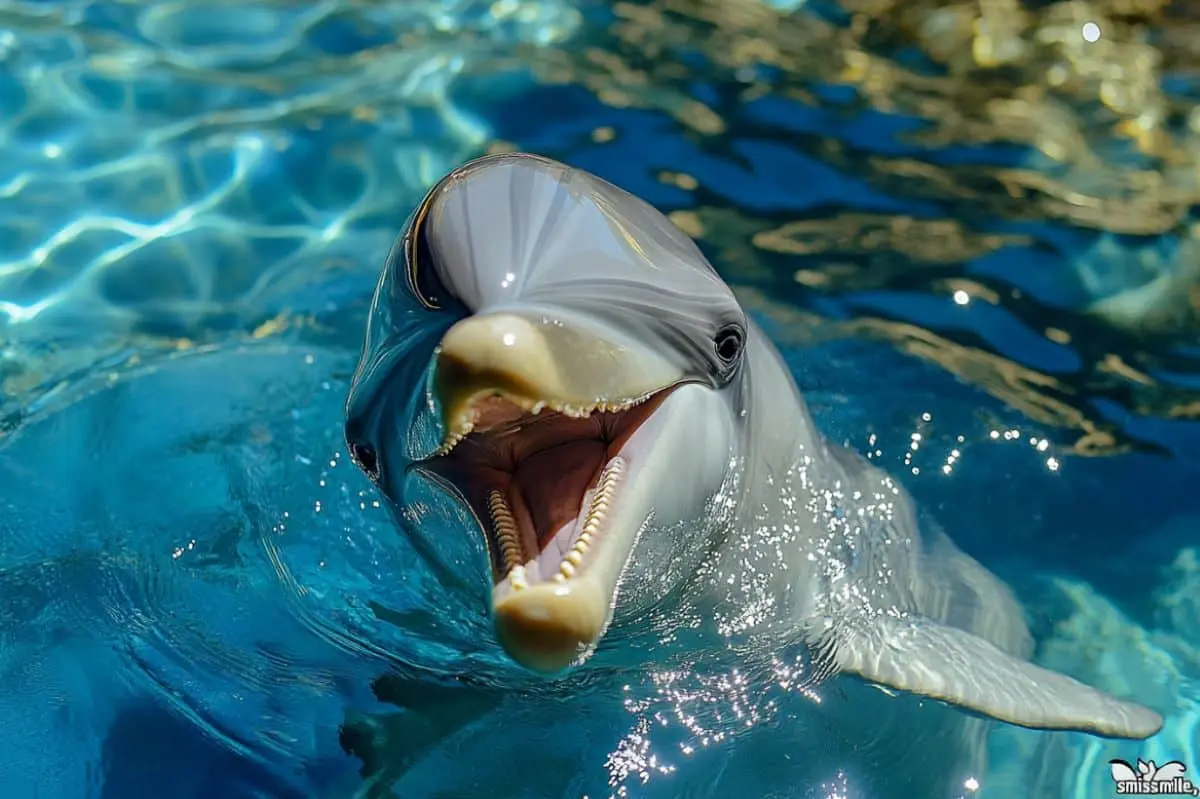Dolphins are often seen sporting what looks like broad, contagious smiles. But do these playful creatures actually smile?
According to a recent study on dolphin play published on October 2 in iScience, the answer is a tentative “maybe.” Researchers found that dolphins exhibit a smile-like facial expression during playful interactions, suggesting they may engage in a behavior akin to human laughter. However, some experts caution against attributing human-like emotions to dolphins, as their true intentions remain elusive.
For a long time, scientists have noted, mostly anecdotally, that dolphins display a behavior called “open mouth,” often associated with smiling. Other animals, such as primates, also exhibit a relaxed open mouth during playful moments, serving as a signal that communicates, “I’m just having fun!” explains Elisabetta Palagi, a comparative ethologist at the University of Pisa in Italy. “It’s similar to using a smiley face in a text message, which can sometimes be misleading.”
Despite these observations, the behavior had never been rigorously studied in dolphins. To change that, Palagi and her team recorded nearly 900 play sessions involving 22 captive bottlenose dolphins (Tursiops truncatus), capturing around 1,300 “smiles” from 17 individuals. The researchers documented dolphins playing alone, with each other, and even with humans.
The findings revealed that dolphins predominantly displayed their open-mouth behavior while engaging with companions, typically other dolphins. When playing alone, this behavior was rarely observed. Additionally, about 90 percent of open-mouth expressions occurred when the dolphins were in sight of a playmate. Remarkably, when one dolphin displayed this “smile,” the recipient mirrored it back within about a second, akin to the time it takes for humans to respond to a facial expression.
These results indicate that the dolphins’ open-mouth expression is likely a sophisticated form of communication, possibly working alongside vocal signals. While it’s challenging to determine whether this behavior has the same evolutionary roots as the human smile, Palagi suggests it serves a similar function given the context and manner in which it is expressed.
Animal behavioralist Erin Frick, who did not participate in the study, acknowledges the significance of observing dolphins’ open-mouth behavior in play but adds that dolphins use this mouth-opening gesture in various contexts, including aggressive situations. “I don’t believe open mouths are exclusively for signaling play, although they certainly play a role,” says Frick, from Eckerd College in St. Petersburg, Florida.
Palagi, however, believes the open-mouth display is specifically linked to play. During instances of aggression observed in her study, the team did not note this particular behavior. “When we witnessed aggression, the mouth opening was extremely quick, often followed by a bite or an attempted bite,” she explains.
Despite this distinction, Frick is hesitant to label the behavior as a smile. “It’s not the same,” she states, “but it does play a functional role in their communication.”
Comparative psychologist Heather Hill shares similar reservations about interpreting these apparent smiles. “I’m not entirely comfortable calling it a ‘smile,’ as delphinids and whales utilize the open-mouth display in a variety of social contexts,” notes Hill from St. Mary’s University in San Antonio.
Palagi recognizes this skepticism. “There’s an ongoing debate about whether smiling or laughing in nonhuman animals stems from emotional arousal or intention,” she admits. “We approached this with caution, referring to it simply as a facial display.” She further adds, “It’s challenging to determine whether the open mouth conveys an emotional state or simply communicates, ‘Hey, I’m just playing, don’t worry!’ or perhaps serves both purposes.”
One area the research team hopes to explore further is whether the presence of open-mouth behavior influences play sessions. It’s possible that this shared expression of joy—if that’s indeed what it is—could encourage dolphins to engage in play for longer periods.
